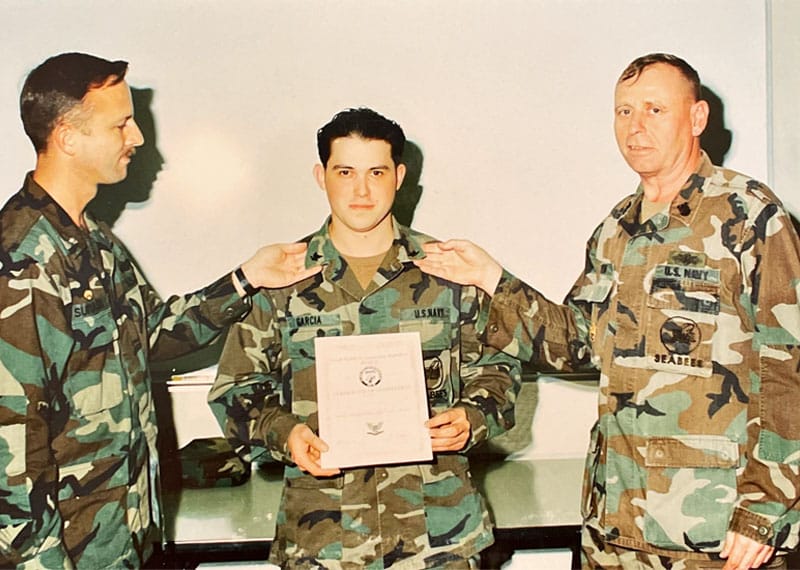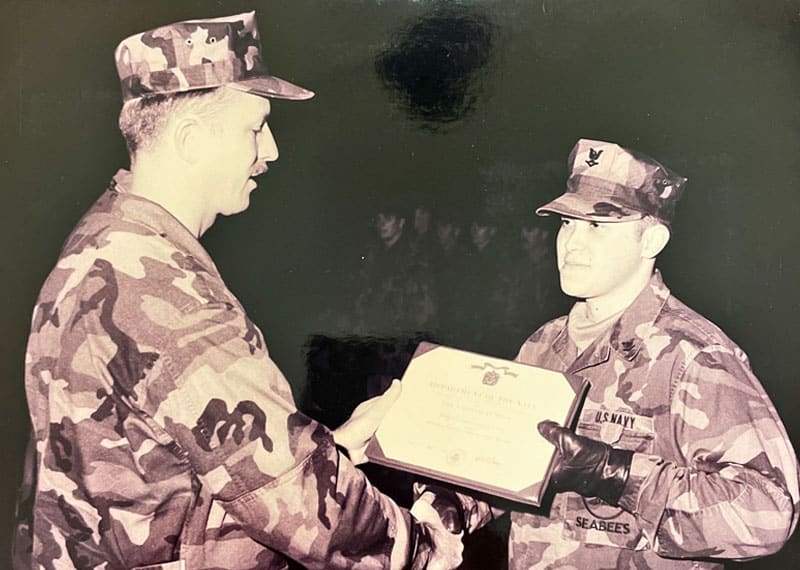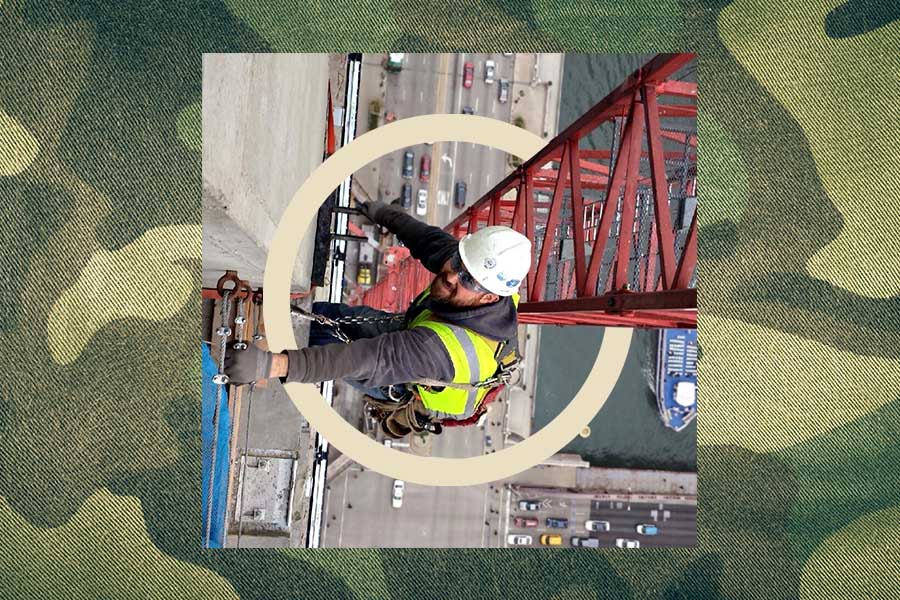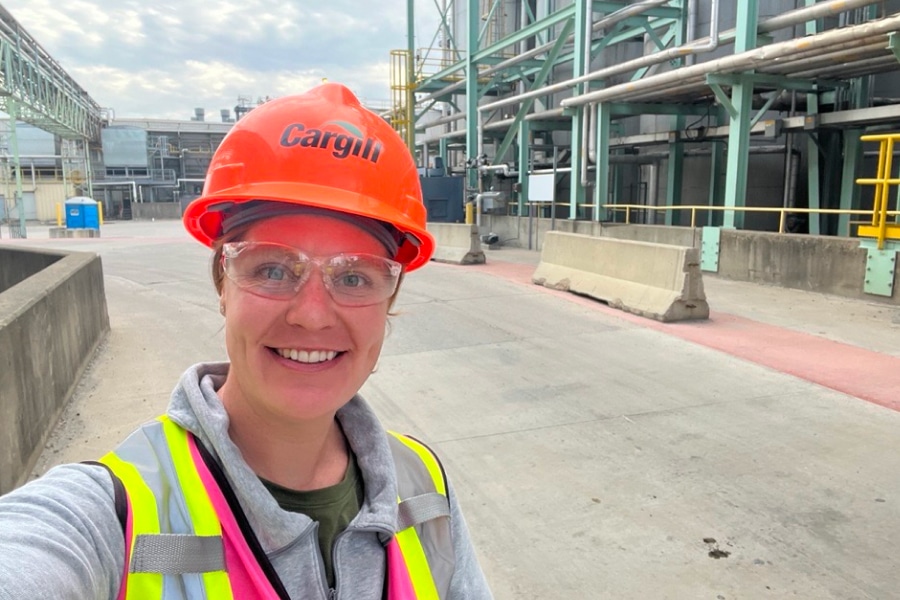Long before Sean Garcia became a concrete superintendent with Pepper Construction Co. in Chicago, he was part of an apprentice program unlike any other, taking him on jobs across the United States and to far-flung locations around the world.
Garcia, however, didn’t learn the construction trades the way most do. He didn’t work conventional jobs as an apprentice building high-rise skyscrapers, and he didn’t traverse expansive civil sites erecting highways or bridges. What’s more, Garcia was almost a decade into his construction career before he joined a union.
Garcia learned construction as a member of the United States Naval Construction Battalions, better known as the Navy Seabees—a nickname formed from the heterography of the first letters “C” and ”B” (Construction Battalions).
“Being in the Seabees made me a better construction worker,” Garcia said.
Historic roots
There has always been a construction and infrastructure component to military operations, but the official beginning of the U.S. Navy Seabees goes back to the early 1940s.
With much of Europe entrenched in the early battles of World War II, and with the United States fully engaged in the conflict after the attack on Pearl Harbor, Rear Admiral Ben Moreell, chief of the Bureau of Yards and Docks, asked for authority to activate a unique building organization that would support the Navy and Marines in remote locations. This group, the Naval Construction Battalions, would also be able to defend itself if attacked.
On January 5, 1942, Moreell were formed at a new base in Davisville, Rhode Island.
Since then, the Seabees have played instrumental roles in nearly every notable conflict in United States history, including World War II, the Vietnam War and various conflicts in the Middle East. Today, roughly two-thirds of the units are reserves, while active-duty Seabees—considered an “elite” unit in the military—serve in six active battalions, two amphibious construction battalions and two underwater construction teams, according to the Seabee Museum and Memorial Park website.
Seeing the world
Garcia joined the Seabees in 1993, after seeing a high school friend who had graduated a year prior join the unit. Garcia, whose father and uncle made careers in the construction trades, saw promise in that path for himself, but wasn’t sure where to begin. “Talking with my friend, the military would train me as far as I wouldn’t have to go through an apprenticeship,” Garcia said. “I would be in the military and learn my trade.”
At the time, the Seabees had a few different construction concentrations. Garcia became a “builder,” which included duties most closely associated with carpentry, concrete finisher and mason. “That’s why I ended up joining,” Garcia said.
After completing boot camp in Orlando, Florida, Garcia’s construction journey with the Seabees would take him on missions and projects all over the country and world.

Garcia completed trade school just outside of Los Angeles. His first active-duty station was for one year in Adak, Alaska, a tiny island on the southern tip of the Bering Sea considered the westernmost city in the United States, with a population of around 300. Garcia then transitioned to a post in Gulfport, Mississippi, to a deployable unit training before heading to South Korea and Okinawa, Japan. He then returned to Gulfport for more training.
Garcia finished his nearly decade in the Seabees with stops in Puerto Rico and the Caribbean before returning to unit at a base near his home in the Chicago area. “I was able to serve out my last three years pretty much at home,” Garcia said.
Among the most notable projects he worked on was building a barracks for the Royal Coast Guard in St. Vincent and the Grenadines, the southern Caribbean nation just south of St. Lucia and west of Barbados.
Never in combat, Garcia finished his time in the Seabees in July 2001.
Finding his footing
Garcia’s experience in the Navy Seabees gave him a clear advantage when first entering the construction job market as a civilian, but finding permanent work initially was a challenge.
Garcia’s military building credentials provided a clear and easy sell when looking to join one of the few carpenters’ unions in Chicago. One union leader, after learning of Garcia’s Seabees background, was willing to “sign him up on the spot,” Garcia said.
Still, once part of a union, finding work wasn’t easy. “No one was hiring me because they didn’t know me; they didn’t know my face,” Garcia said, alluding to the reputation and personal connections that are often required to consistently get work in construction. “From 6 a.m. to 7 a.m. every day, I was stopping anywhere from six to eight jobsites trying to find work, and no one is hiring,” Garcia said.

Finally, an equipment operator friend was able to help Garcia land his first job, and for the next several years his private-sector construction career was off and running.
Then came the 2008-09 financial crisis and recession—and the economic wreckage that accompanied it. Garcia, like many in construction, suddenly found it impossible to get work. The industry was in tatters. “When the recession hit, it was really tough,” Garcia said. “I actually left construction for a while because there was no work.”
Using his G.I. Bill, Garcia went back to school, earning his associate degree before starting to work toward a bachelor’s degree—in nursing. “I was ready to change fields altogether,” Garcia said. “Then, while on break from school, I got hired on to do a job with the old company.”
That job was building a large Ronald McDonald House for one of the hospitals in downtown Chicago. “I went back to school after the summer, but even after working for that little bit, my heart was still in construction,” Garcia said. All told, Garcia was completely out of construction from 2009-2011 before deciding to forgo nursing to remain in construction.
Shortly thereafter Garcia landed with his current company, Pepper Construction, working various jobs throughout the Chicago area. His first job with Pepper was also his favorite. Garcia spent five years remodeling Wrigley Field, the more than 100-year-old ballpark of Major League Baseball’s Chicago Cubs.
Now a national landmark, Wrigley Field has required major renovations and upgrades in the past decade, including a complete modernization of the ballpark’s foundation, playing field and player facilities; its outfield bleachers and scoreboards; as well as enhanced amenities and fan attractions throughout the outer concourse.
Garcia and his Pepper Construction team would sporadically work on some parts of the renovation during the baseball season as the team played games on the road, while resuming other, more-intensive work in the offseason months.
“That is the best job I’ve worked on,” Garcia said, “because of the knowledge that we gained from working on that. It’s such a unique situation. We’ve used some of that knowledge we learned working on Wrigley on other jobs since.”
Mastering the trade
Garcia is resolute when reflecting on the tremendous impact his military experience has had on his success in construction. “It made me a better construction worker,” he repeatedly said. Looking back, Garcia is especially grateful of the attitude and discipline he learned while part of the Navy Seabees.
“One of the things that the Seabees taught the younger troops is to plan and estimate our jobs,” Garcia said. “Even though the job was already there. We knew what’s going to happen. They would still have us, the younger troops, plan and estimate the jobs. We would learn how to do it. Then, once we figured out this is what we think it’s going to take, we would go in and do what they called ‘fry the package.’ We would go and present the package to our chain of command and show them, ‘This is what it’s going to take.’”
“It definitely helped me become a better superintendent,” Garcia continued, “because there are times where people who are planning and estimating things in offices are out in the field. And what looks good on paper doesn’t necessarily translate into the field really well.”
Knowing how to plan and estimate, Garcia concluded, and knowing what questions to ask, even if they’re beyond his expertise or job role, is a skill he wouldn’t have without his time in the Navy Seabees. “That’s helped a great deal,” Garcia said. “Like I said, it made me a better construction worker.”












